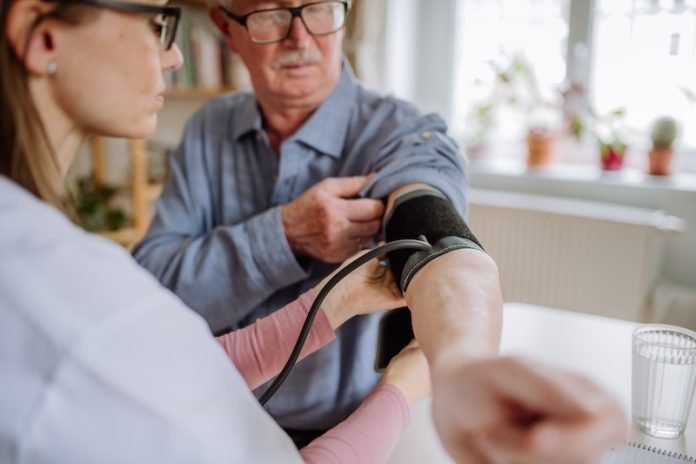
European researchers are harnessing big data and AI to uncover personalized treatments for heart disease and strokes.
Heart disease and strokes are two significant health challenges in Europe, impacting millions of lives. These conditions are complex, and treatments vary in effectiveness from person to person.
However, a groundbreaking approach is emerging, driven by EU-led research initiatives that delve into the realm of big data and artificial intelligence (AI).
By analyzing vast amounts of patient data, researchers aim to unlock the secrets of personalized medicine for heart disease and strokes.
Personalized Medicine for Heart Disease: The BigData@Heart Project
Professor Rick Grobbee, a researcher at the University Medical Center Utrecht in the Netherlands, has been a pioneer in the field of personalized medicine for heart disease.
He believes that understanding large populations of heart disease patients can reveal different subgroups within this disease category.
Grobbee’s journey into this field began in the early 1980s when he was studying high blood pressure.
Heart disease is alarmingly widespread in Europe. In 2015, over 85 million Europeans were living with cardiovascular disease, according to the European Heart Network.
Heart attacks can manifest suddenly or develop over weeks, leading to symptoms like chest pains, nausea, and shortness of breath. It’s a condition that impacts patients’ quality of life significantly.
Behind heart failure and heart attacks lie different illnesses, and treatments do not have uniform success rates.
Grobbee recognized the need for a more personalized approach to treatment, leading to the BigData@Heart project, which concluded in February 2023 after six years.
The project, funded by the EU, aimed to gather information on heart disease patients. With over 50 million patients’ data from various sources, including databases and AI, Grobbee and his team created a deep and wide-reaching understanding of the disease.
This approach, combined with the power of computers, allowed researchers to uncover diverse patient subgroups.
Historical Precedents: The Framingham Heart Study
The concept of studying large populations to gain insights into disease is not new. In 1948, the “Framingham Heart Study” began in Massachusetts, USA.
It revealed that factors like high blood pressure, elevated cholesterol levels, diet, and lifestyles significantly influenced heart attack risk.
This understanding led to a revolution in treatment, with targeted drugs for high blood pressure saving millions of lives.
The BigData@Heart Approach
BigData@Heart applied a similar methodology to heart disease, narrowing patient classifications based on factors like additional conditions (e.g., diabetes, kidney issues, heart rhythm disorders).
This allowed doctors to identify which treatments were most effective for specific subgroups. The project included specialist organizations from several EU countries, Switzerland, the UK, and the US.
The outcome was enlightening. For example, the study revealed that beta blockers, medications that reduce blood pressure, had varying effects.
Some patients benefited, some did not, and a third group experienced side effects. Armed with this knowledge, doctors can now provide more customized treatments and guidance for individual patients.
Collaboration with the Pharmaceutical Industry
BigData@Heart included industry involvement through the Innovative Medicines Initiative, where the pharmaceutical industry contributed funding and conducted its own studies.
This collaboration was crucial in exploring treatments for different patient types.
Personalized Stroke Treatment: The TAXINOMISIS Project
Another EU-funded initiative, the TAXINOMISIS project, is taking a similar personalized approach to tackle strokes.
The project focuses on categorizing patients based on medical imaging, blood-test results, and existing health conditions.
Carotid Artery Disease: A Key Focus
TAXINOMISIS is centered around a specific disease affecting the carotid arteries, which supply blood to the brain.
Deposits called plaques can build up in these arteries, leading to blockages or plaque pieces breaking off and entering the brain. This condition significantly increases the risk of stroke and dementia.
Improving Risk Assessment and Intervention
Currently, patients are assessed using medical imaging to estimate blockage levels, but this method has limitations. TAXINOMISIS developed software that generates a 3D image of the artery and predicts plaque expansion and the risks of it breaking apart.
This allows doctors to make more informed decisions about treatment, such as prescribing medication, using stents to widen arteries, or recommending surgery.
Laboratory-on-a-Chip Technology
The project also developed a “lab on a chip” technology that quickly tests a few genes implicated in carotid artery disease, providing results within minutes and reducing costs significantly.
Such advancements offer doctors a more comprehensive view of a patient’s specific needs.
Empowering Doctors with Personalized Insights
Ultimately, research initiatives like TAXINOMISIS aim to provide doctors with a better understanding of each patient’s unique requirements.
While the doctor ultimately decides on the treatment, these projects bring clarity to why patients respond differently, offering hope for improved care and outcomes.
In the quest for personalized medicine, European researchers are leveraging the power of big data, AI, and collaborative efforts with the pharmaceutical industry.
These endeavors have the potential to transform the way heart disease and strokes are treated, ultimately benefiting countless patients.
If you care about health, please read studies about the benefits of low-dose lithium supplements, and what we know about egg intake and heart disease.
For more information about health, please see recent studies about potatoes and high blood pressure, and results showing 6 best breads for people with heart disease.
Follow us on Twitter for more articles about this topic.
Source: Horizon: The EU Research & Innovation Magazine




